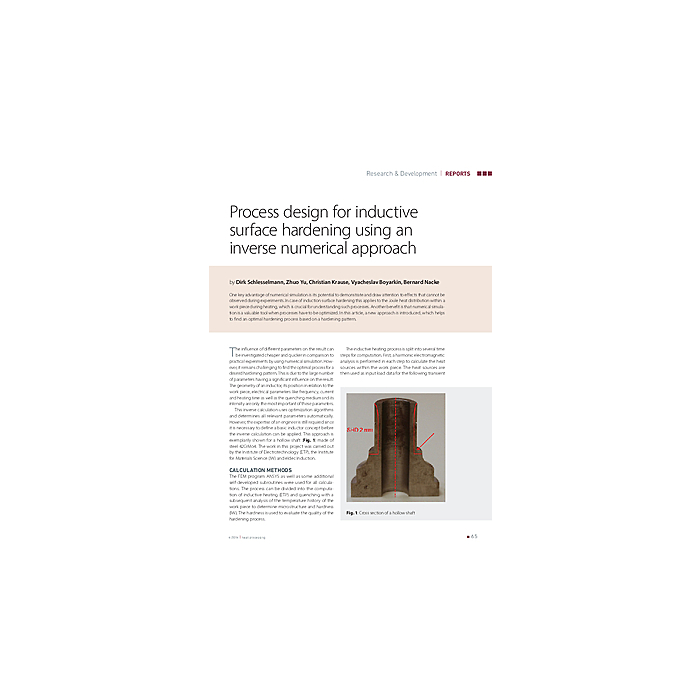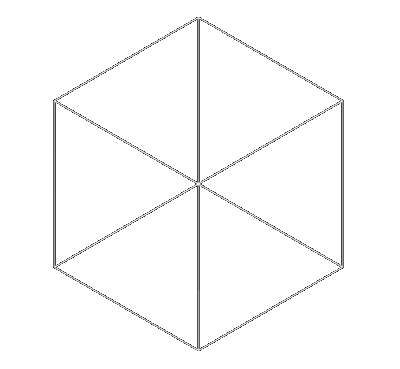Process design for inductive surface hardening using an inverse numerical approach
4,90 €
Auf Lager
Artikelnummer
00541_2014_04_07
One key advantage of numerical simulation is its potential to demonstrate and draw attention to effects that cannot be observed during experiments. In case of induction surface hardening this applies to the Joule heat distribution within a work piece during heating, which is crucial for understanding such processes. Another benefit is that numerical simulation is a valuable tool when processes have to be optimized. In this article, a new approach is introduced, which helps to find an optimal hardening process based on a hardening pattern.
| Autoren | Dirk Schlesselmann / Zhuo Yu / Christian Krause / Vyacheslav Boyarkin / Bernard Nacke |
|---|---|
| Erscheinungsdatum | 01.04.2014 |
| Format | |
| Zeitschrift | heat processing - Issue 04 2014 |
| Verlag | Vulkan-Verlag GmbH |
| Sprache | English |
| Seitenzahl | 1 |
| Titel | Process design for inductive surface hardening using an inverse numerical approach |
| Beschreibung | One key advantage of numerical simulation is its potential to demonstrate and draw attention to effects that cannot be observed during experiments. In case of induction surface hardening this applies to the Joule heat distribution within a work piece during heating, which is crucial for understanding such processes. Another benefit is that numerical simulation is a valuable tool when processes have to be optimized. In this article, a new approach is introduced, which helps to find an optimal hardening process based on a hardening pattern. |
Eigene Bewertung schreiben


